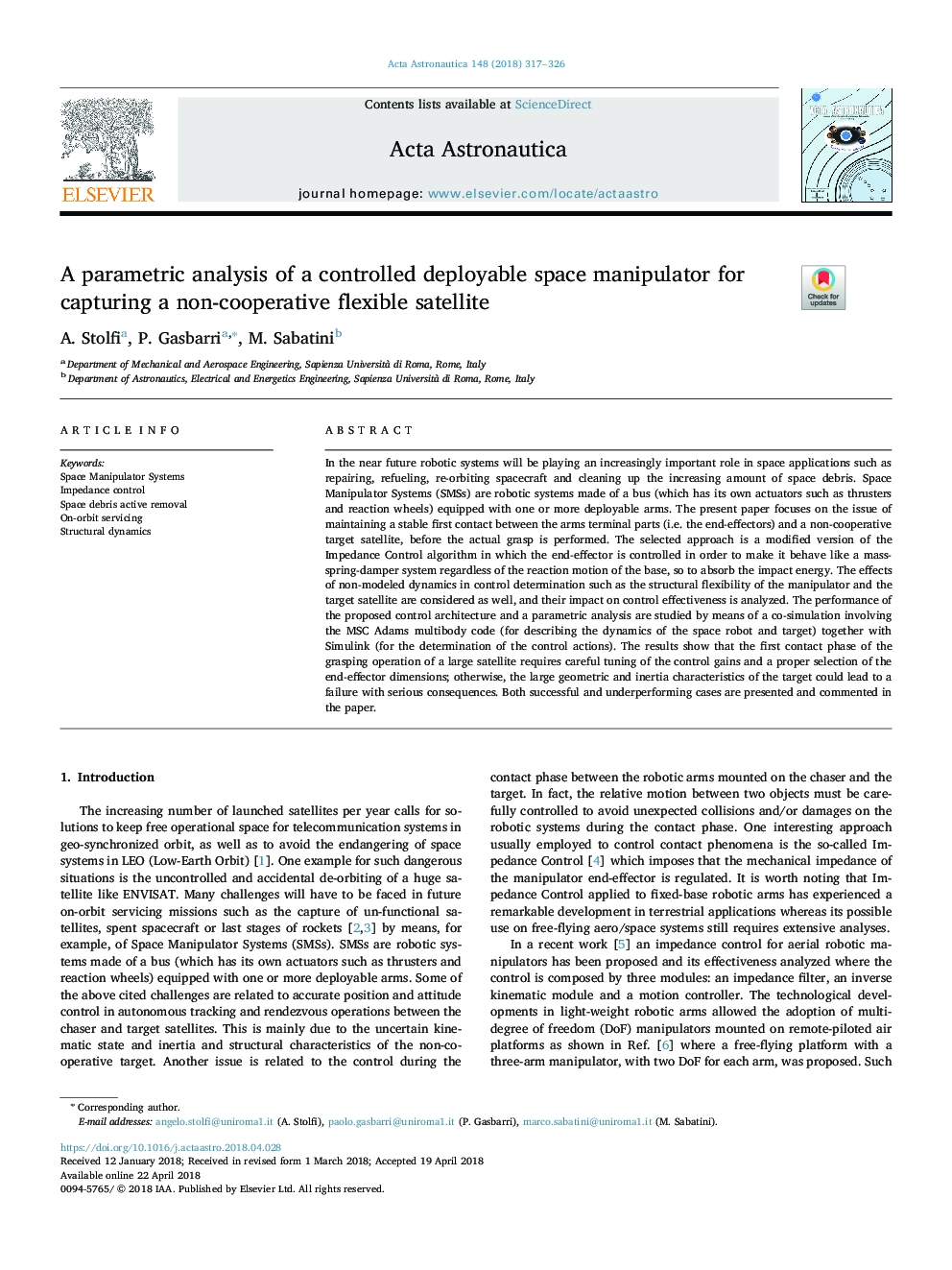| کد مقاله | کد نشریه | سال انتشار | مقاله انگلیسی | نسخه تمام متن |
|---|---|---|---|---|
| 8055512 | 1519906 | 2018 | 10 صفحه PDF | دانلود رایگان |
عنوان انگلیسی مقاله ISI
A parametric analysis of a controlled deployable space manipulator for capturing a non-cooperative flexible satellite
ترجمه فارسی عنوان
یک تجزیه و تحلیل پارامتری از یک کنترل کننده فضایی قابل کنترل قابل ملاحظه برای گرفتن یک ماهواره انعطاف پذیر غیر تعاونی
دانلود مقاله + سفارش ترجمه
دانلود مقاله ISI انگلیسی
رایگان برای ایرانیان
کلمات کلیدی
سیستم های فضایی مانیپولاتور، کنترل امپدانس، حذف فعال فضایی فعال، در حین خدمات اوربیتال، دینامیک ساختاری،
موضوعات مرتبط
مهندسی و علوم پایه
سایر رشته های مهندسی
مهندسی هوافضا
چکیده انگلیسی
In the near future robotic systems will be playing an increasingly important role in space applications such as repairing, refueling, re-orbiting spacecraft and cleaning up the increasing amount of space debris. Space Manipulator Systems (SMSs) are robotic systems made of a bus (which has its own actuators such as thrusters and reaction wheels) equipped with one or more deployable arms. The present paper focuses on the issue of maintaining a stable first contact between the arms terminal parts (i.e. the end-effectors) and a non-cooperative target satellite, before the actual grasp is performed. The selected approach is a modified version of the Impedance Control algorithm in which the end-effector is controlled in order to make it behave like a mass-spring-damper system regardless of the reaction motion of the base, so to absorb the impact energy. The effects of non-modeled dynamics in control determination such as the structural flexibility of the manipulator and the target satellite are considered as well, and their impact on control effectiveness is analyzed. The performance of the proposed control architecture and a parametric analysis are studied by means of a co-simulation involving the MSC Adams multibody code (for describing the dynamics of the space robot and target) together with Simulink (for the determination of the control actions). The results show that the first contact phase of the grasping operation of a large satellite requires careful tuning of the control gains and a proper selection of the end-effector dimensions; otherwise, the large geometric and inertia characteristics of the target could lead to a failure with serious consequences. Both successful and underperforming cases are presented and commented in the paper.
ناشر
Database: Elsevier - ScienceDirect (ساینس دایرکت)
Journal: Acta Astronautica - Volume 148, July 2018, Pages 317-326
Journal: Acta Astronautica - Volume 148, July 2018, Pages 317-326
نویسندگان
A. Stolfi, P. Gasbarri, M. Sabatini,
